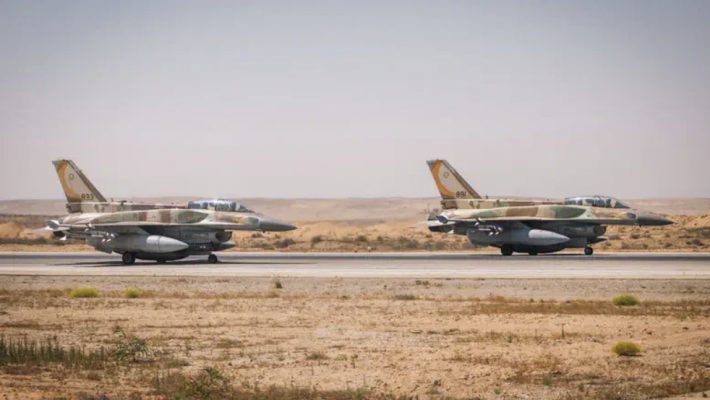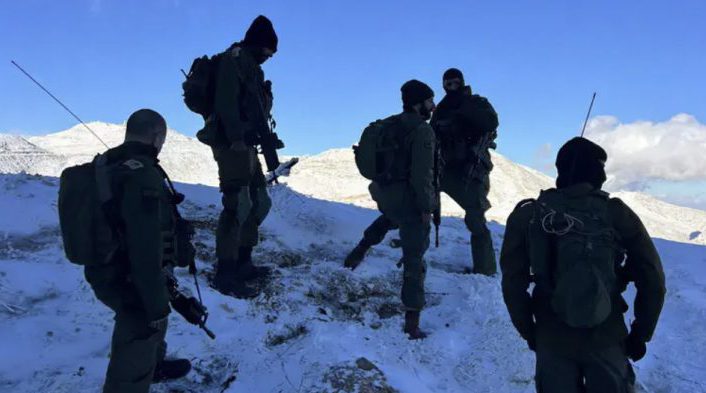As we have seen over the past several days, Israeli aircraft now fly at will to Iran and return safely to Israel. But the story of the February 10, 1979 flight is a lesson in courage.
It is hard to imagine today, but a time there was when there were regular scheduled commercial flights between Israel and Iran.
Four times a week an El Al Boeing 720 would take off from Lod Airport (renamed Ben Gurion Airport in 1973 after David Ben Gurion, Israel’s first Prime Minister, passed away), heading westwards to the coast with the Mediterranean Sea, then turn northwards for some 550 km (340 miles), then eastwards to overfly Turkey, and finally from Turkey into Iran, where it would land in Tehran’s Mehrabad International Airport.
This circuitous route was essential because El Al couldn’t overfly hostile Arab states.

Iran Air advertisement from happier times, featuring the tail-fin of an El Al Boeing 747.
This direct route from Israel to Iran was served solely by El Al: neither Iran Air nor any other Iranian airliners ever flew to Israel.
Flight LY 563 flew on Wednesday and Friday mornings, and Flight LY 567 flew on Tuesday and Thursday nights.
The last commercial flight ever from Tehran to Tel Aviv flew on 10th February 1979. The Ayatollah’s Islamic Revolution put a stop to any friendly links between the two countries, and no more civilian flights flew from Israel to Iran.
But as the French say, plus ça change, plus c’est la même chose: the more it changes, the more it’s the same thing. Millennia earlier, King Solomon expressed it differently: “That which was it what will be, and that which was done is what will be done, and there is nothing new under the sun; anything of which you say, ‘See this, it is new!’ – it has already been” (Ecclesiastes 1:9-10).
Indeed some things in the Middle East never change: As we have seen over the past several days, Israeli aircraft still fly at will to Iran and return safely to Israel.
Israeli aircraft recently flew once again to Tehran’s Mehrabad International Airport – but unlike before the Islamic Revolution they didn’t land there: they just destroyed the Iranian Air Force F-14 Tomcats on the ground there, ensconced in their reinforced concrete hangars, putting an end to half-a-century of the Tomcat’s operational history.
Iran was the only country other than the USA ever to use the Tomcat, and the two which Israel destroyed on Monday appear to have been the last ones still in service: with no spare parts or replacements available for 46 years, the others had all been cannibalised to keep these two operational.
El Al’s last ever flight to Iran on 10th February 1979 was, unusually, a Boeing 747, with more than double the payload of the Boeing 720. The Islamic revolution was underway, and Iran was in turmoil. It was impossible to know which side would win, and Israel was in the process of extricating all diplomatic and other personnel stationed in Iran.
Mehrabad International Airport was still under the control of Government forces loyal to the Shah, but with confused fighting in and around Tehran, but that could change at a moment’s notice.
The pilot, Captain Uri Bar-Lev, a former IAF combat pilot (as were all El Al pilots), had been ordered to fly to Mehrabad, and to take as many people as possible on board. Usually when aircraft land the flight-crew power down the engines; Bar-Lev kept the four engines on but idling, in case of emergency. (It can take up to a quarter of an hour to power up the engines from cold.)
As the Israelis (and some local Jews) were boarding the airliner, the Air Control Tower ordered him to switch off the engines. He realised that the airport had fallen to rebel forces, and that leaving instantly was a matter of life and death.
He ordered the crew to close the door, and even before they complied he began taxiing towards the runway. The ACT ordered him to remain on the ground, denying him permission to take off. Even as he was taxiing, he and his passengers saw the Islamic mobs racing towards the Jumbo Jet brandishing their weapons.
In blatant violation of all protocol he swung the giant aircraft onto the runway, accelerated, and took off. Before leaving the ground, he saw two F-4 Phantoms of the Iranian Air Force heading for him. As a former fighter pilot himself, Bar-Lev knew that they would have to overshoot, turn, and come back on the attack – a manoeuvre which takes about 2 minutes.
So with 2 minutes to make his escape he took the giant aircraft off the ground, and kept it at 60 feet, maybe 70 feet above the ground, below the altitude at which the Phantoms’ radars and anti-aircraft missiles could operate.
Flying a Boeing 747 at 60 feet is an impossible feat – but when the pilot is a highly-trained Israeli Air Force fighter pilot, the impossible becomes possible.
Only when he reached the Turkish border, some 700 km (435 miles) away, did he climb to regular altitude.
“That which was it what will be, and that which was done is what will be done”, and over the last several days, too, Israeli aircraft have once again flown all over Iranian airspace without any permission from Iranian Air Traffic Control.
And as then, the Iranian Air Force is powerless to confront them.
And, just as before the Islamic Revolution, as much as Israeli aircraft fly to Iran, Iranian aircraft still cannot fly to Israel.





